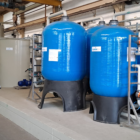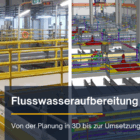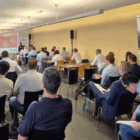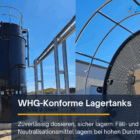The wastewater from paper mills is produced in large quantities and contains a variety of impurities caused by the different production processes. A particular characteristic of this wastewater is the high content of lignin, an organic substance that is released during the pulping of wood. In addition to lignin, the wastewater also contains fiber residues, fillers, chemicals (such as bleaching agents and dyes) and organic compounds. Due to this composition, wastewater treatment in paper mills poses special challenges, and the industry's high water consumption often necessitates the use of river water treatment plants.
Table of contents
Technical background
The composition of wastewater in paper mills varies depending on the raw material used and the type of manufacturing process. In addition to organic substances such as cellulose and lignin, there are also chemicals that are used during the production process to bleach, dye or strengthen the paper. Due to the high water requirement, many paper mills use water from natural bodies of water, which is purified in river water treatment plants before use and made suitable for the production process.
Process for wastewater treatment in paper mills
The wastewater is treated using a combination of mechanical, biological and chemical-physical processes. The aim is to reduce organic and chemical pollution and comply with the legal requirements for wastewater discharge.
1. mechanical pre-cleaning
Mechanical pre-treatment is the first step in wastewater treatment and is used to remove larger solids such as fiber residues and suspended solids. These residues are retained by screens and sieves in order to relieve the subsequent biological and chemical treatment process.
2. flotation plants
Dissolved air flotation is often used to remove finely dispersed solids and fiber particles from wastewater. In this process, air bubbles are introduced into the wastewater, which attach themselves to the solids and transport them to the surface. There they can be skimmed off. This method is particularly effective for removing solid organic particles and suspended solids and preparing the wastewater for biological treatment.
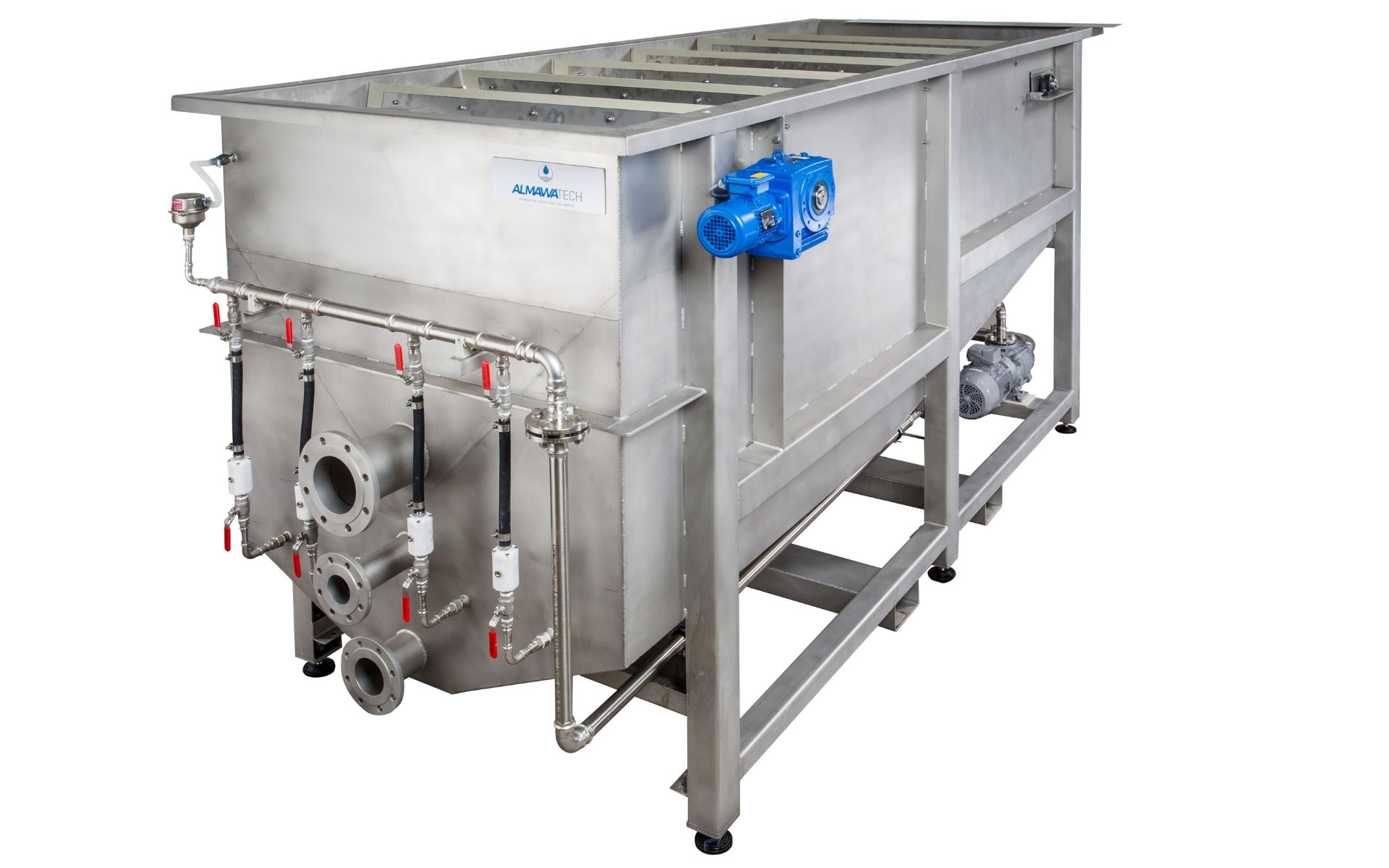
Photo: Our ALMA NeoDAF flotation plant
3. biological treatment
Biological treatment aims to reduce the organic load in wastewater. Various processes are used to break down organic impurities such as lignin and other plant residues.
Activated sludge process
- In this process, the wastewater is mixed in an aerated tank with microorganisms that break down the organic substances contained in the wastewater. The resulting activated sludge is partially recycled in order to continuously maintain the microbial activity and the degradation process.
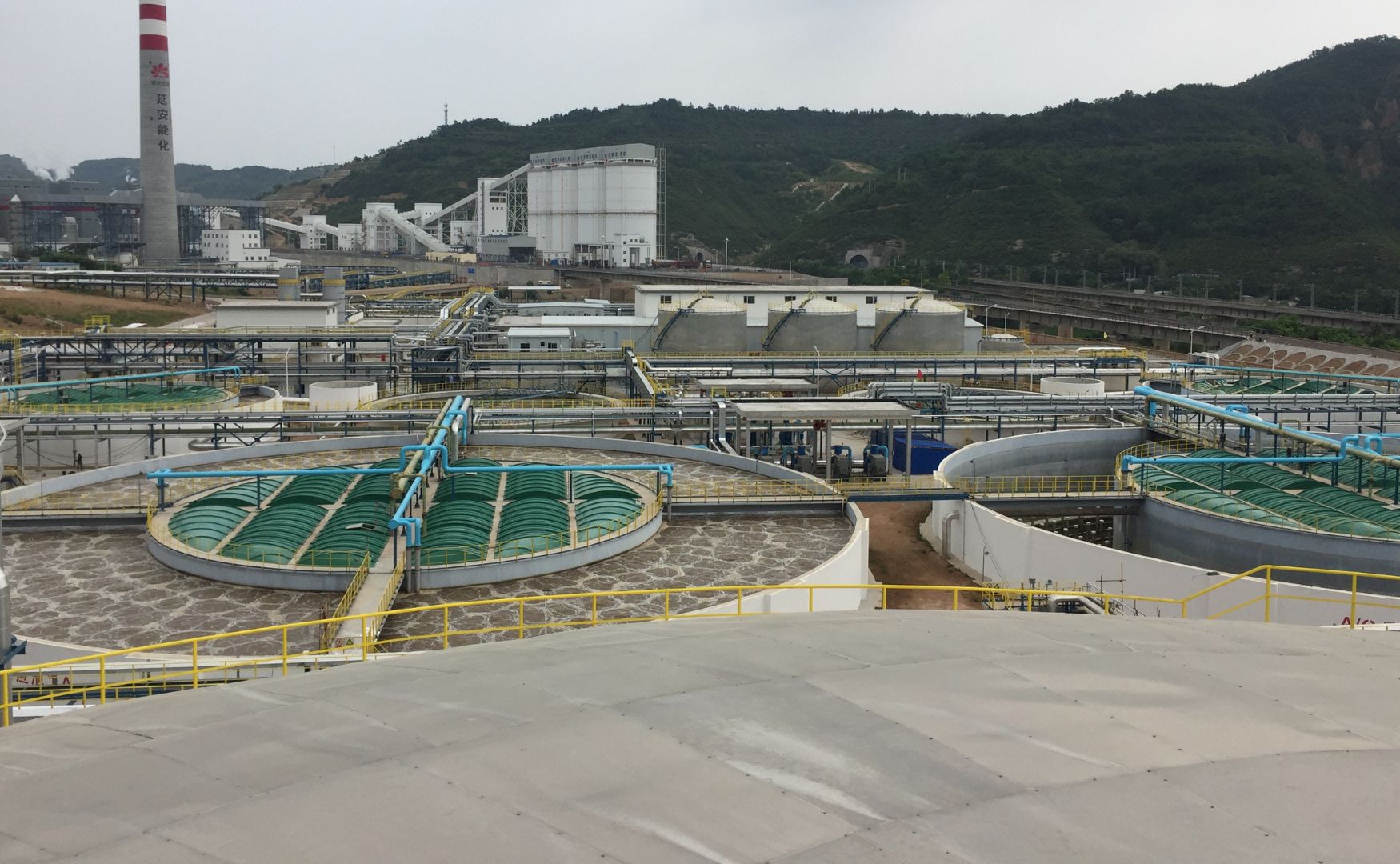
Photo: Aeration tank for large wastewater flows(ALMA BHU BIO)
Moving Bed Biofilm Reactor (MBBR)
- Another option for treating wastewater from the paper industry is the use of Moving Bed Biofilm Reactor (MBBR) systems. In these reactors, special plastic carriers provide a larger settlement area for biofilms, which increase the efficiency of biodegradation. Thanks to the moving biofilm carriers, the MBBR enables a higher load capacity and an improved degradation rate of organic substances, making the process particularly advantageous for heavily contaminated wastewater from paper production.
Anaerobic treatment / biogas plants
- In paper mills with high organic loads, anaerobic wastewater treatment is often used. These processes take place in the absence of oxygen, whereby microorganisms break down the organic substances and produce biogas (mainly methane). The biogas produced can be used as an energy source in the paper mill, increasing energy efficiency and reducing operating costs.
- Another advantage of this anaerobic treatment is the formation of pellet sludge, which is formed by the high calcium concentrations in the wastewater. This pellet sludge is characterized by its high density and is particularly easy to handle in biogas plants (such as the ALMA BHU GMR). Due to its compact structure, the sludge is not easily discharged from the anaerobic reactor, which significantly reduces the risk of biomass carryover. This property ensures stable and efficient wastewater treatment, as the loss of biomass is minimized and process stability is maintained in the reactor.
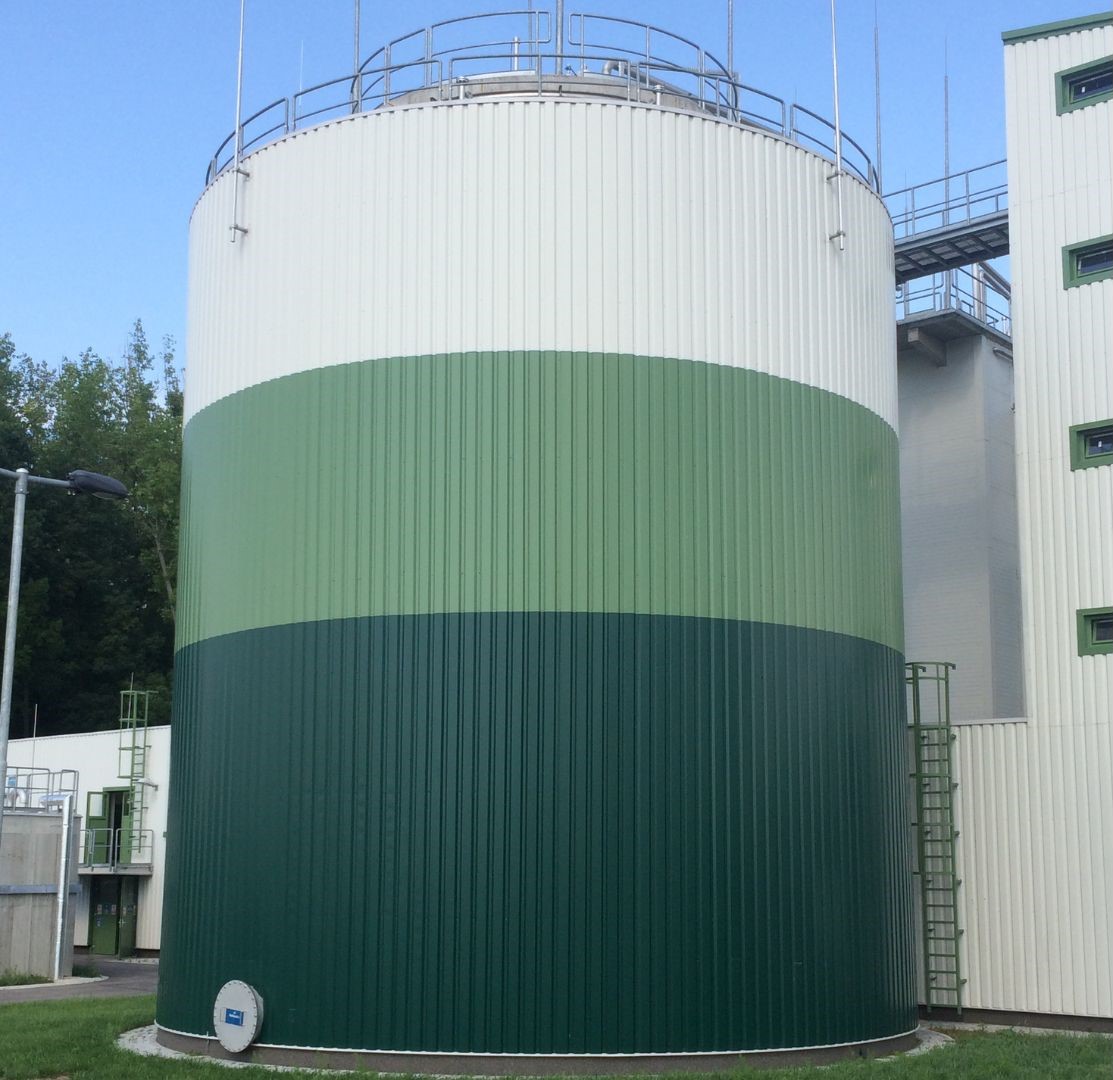
Photo: Our biogas reactor specially designed for high calcium concentrations ALMA BHU GMR
Biofiltration
- Biologically activated filtration can be used as an additional stage to reduce residual contamination in wastewater. This technology, as used in the ALMA BHU BAF plant is particularly effective in removing fine organic residues that remain in the wastewater after mechanical and biological pre-treatment.
A decisive advantage of biofiltration is that it significantly reduces the risk of biofouling in downstream reverse osmosis systems (product overview of reverse osmosis systems). This makes reverse osmosis operation more stable and efficient. This makes it possible to treat the purified water for reuse in a WaterReUse process. Due to the high volumes of water required in the paper industry, this method offers an extremely profitable and environmentally friendly solution for paper mills. Water recycling not only reduces operating costs, but also contributes significantly to the sustainability of the company.
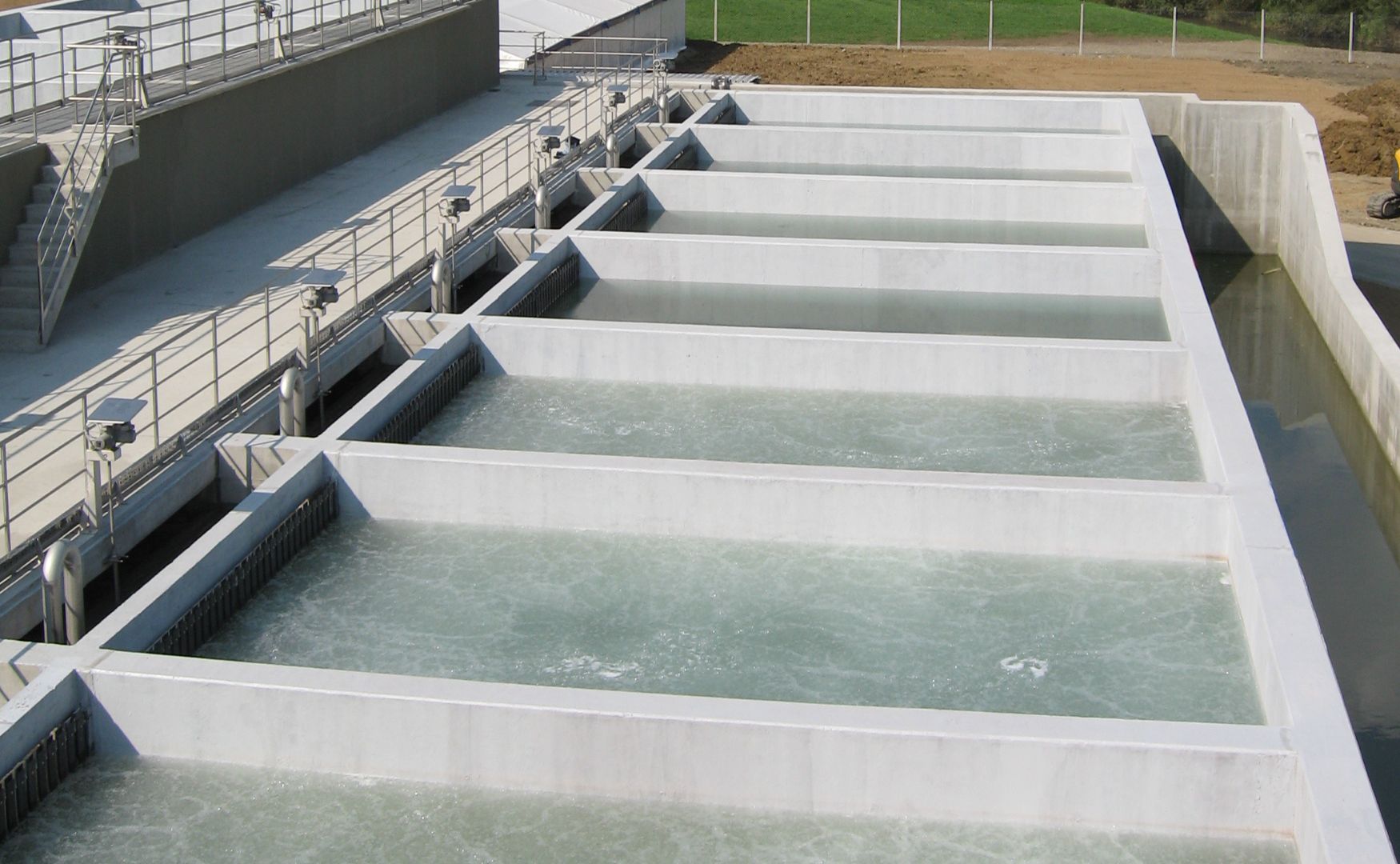
Photo: Biologically activated filtration in concrete construction for wastewater flows of up to 1,000 m³/h(ALMA BHU BAF)
Limescale problem
In the paper industry, the lime problem is a frequently occurring obstacle in wastewater systems and treatment plants. One of the main reasons for this is the high calcium carbonate content in wastewater, which results from the use of calcium carbonate (CaCO₃) as a filler in paper. Recirculating the production water also increases the concentration of calcium in the water, which leads to the formation of deposits in pipes, reactors and fittings.
These deposits can significantly impair the efficiency of the systems by impeding the flow, increasing energy consumption and accelerating the wear of the system components.
To combat these limescale deposits, chemical-physical processes are often necessary, in particular calcium carbonate precipitation. In this process, calcium is precipitated by adding precipitating agents so that it is no longer present in dissolved form and cannot be deposited as limescale. Through the targeted precipitation of calcium carbonate, the deposits can be controlled and separated as sludge during wastewater treatment before they lead to operational disruptions.
Challenges in wastewater treatment in paper mills
High organic load: The processing of wood fibers and the use of lignin lead to a high organic load in the wastewater, which requires efficient biological treatment.
Chemicals in wastewater: The use of bleaching agents, dyes and other chemicals requires specific chemical-physical processes to safely remove these substances.
Limescale deposits: The formation of limescale can severely impair the efficiency of wastewater treatment systems and requires the use of special softening and descaling processes.
River water treatment
Due to the high water requirements, paper mills often rely on river water treatment plants to provide sufficient water for the production process. The raw water from rivers or lakes is treated in several stages. First, it is pretreated in CP plants (chemical-physical plants) to remove dissolved substances and suspended solids through precipitation and flocculation. The water is then further purified in multi-layer filters to filter out any remaining solids and impurities. Finally, depending on the desired water quality, the water is treated in reverse osmosis systems (ALMA BHU BiosS-Treat) to remove dissolved salts and fine particles and thus obtain high-purity water for the production process.

Photo: River water treatment plant for a paper mill in Poland(ALMA BHU BiosS-Treat)
Conclusion
Wastewater from paper mills poses a particular challenge for industrial wastewater treatment due to the high organic and chemical loads and the large amount of water required. Through a combination of mechanical pre-treatment, flotation plants (such as the ALMA NeoDAF), biological processes such as the activated sludge process, MBBR reactors and anaerobic biogas plants the wastewater can be treated efficiently. The limescale problem must be addressed by appropriate softening measures in order to ensure the long-term operational efficiency of the plants.
By using biofiltration systems (e.g. the ALMA BHU BAF) in conjunction with reverse osmosis systems, wastewater can be efficiently recycled and reused. Due to the high water consumption in the paper industry, this is an extremely profitable and sustainable solution for paper mills.


